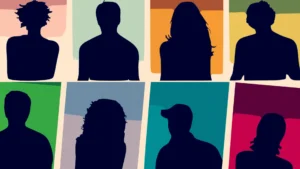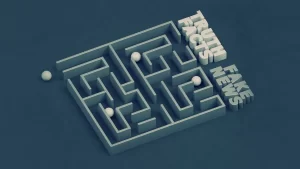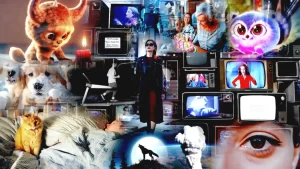
Generative AI is a big deal right now, but what exactly is it? We’ve got the answers.
What is Generative AI?
Generative AI is a type of computer system that makes completely new stuff, like words, pictures, videos, computer code, data, or 3D images. It does this by using the huge amount of data it learned from. These systems ‘create’ new things by looking back at the data they learned from and making fresh guesses.
Generative AI’s job is to make things, unlike other types of AI that do different tasks, like analyzing data.
Why is Generative AI so popular?
Generative AI is making noise because of cool programs like OpenAI’s ChatGPT and the image maker DALL-E. These tools use generative AI to make all sorts of new stuff, like code, essays, emails, social media posts, images, poems, and even math formulas, super quickly. This has the potential to change how people do things.
ChatGPT became super popular, with over a million users a week after it launched. Other big companies like Google, Microsoft’s Bing, and Anthropic jumped into the generative AI game too. So, the excitement around generative AI is growing as more companies join in and find new ways to use it in everyday tasks.
What’s the link between Machine Learning and Generative AI?
Machine learning is a part of AI that teaches a system to guess things based on the data it learned. For example, DALL-E can create pictures based on what you tell it because it understands your instructions.
So, generative AI is like a kind of machine learning, but not all machine learning is generative AI.
Where is Generative AI used?
Generative AI is used in any AI system that creates something new. The most famous examples that got everyone talking about generative AI are ChatGPT and DALL-E.
But after seeing how cool generative AI is, many companies made their own generative AI models. Some of these tools are Google Bard, Bing Chat, Claude, PaLM 2, LLaMA, and more.
What’s Generative AI art?

Generative AI art is made by AI models that learned from existing art. These models studied billions of images from the internet and figured out how to make new art when you ask them.
Midjourney is a popular AI art maker, but there are other good ones too. Microsoft’s Bing Image Generator, which is seen as the best, is an advanced version of DALL-E 2.
What do text-based Generative AI models learn from?
Text-based models like ChatGPT learn by reading a ton of text. It’s like they teach themselves by looking at lots of information and making smart guesses to answer questions.
One problem with generative AI models, especially those that make text, is that they learn from data all over the internet. This data includes stuff that’s copyrighted and things that people didn’t share willingly.
What’s the deal with Generative AI art?
Generative AI art models learned from billions of internet images, including art made by specific artists. Then, they use this learning to create new art when you tell them to.
The new art isn’t exactly the same as the original, but it has some parts from the artist’s work without giving them credit. This leads to debates about whether AI-made art is truly ‘new’ or even ‘art,’ and these debates might continue for years.
What are some problems with Generative AI?
Generative AI models take a lot of internet content and use it to make predictions and create things based on your requests. These predictions are based on the data they learned, but there’s no guarantee they’ll be right, even if they sound reasonable.
The responses from these models can also include biases from the internet content they’ve seen, but it’s often hard to tell if that’s the case. This raises concerns about generative AI spreading false information.
Generative AI models don’t always know if what they make is accurate, and we usually don’t know where the information came from or how the algorithms processed it to create content.
For example, chatbots sometimes give wrong information or just make things up. While generative AI results can be fun and interesting, it’s not wise to rely on the information or content they create, at least for now.
Some generative AI models like Bing Chat or GPT-4 are trying to fix this by adding footnotes with sources. This way, users can know where the response came from and check if it’s accurate.











Welcome to our comments section!
We value your feedback and encourage you to share your thoughts in the comment section. Let’s keep the conversation meaningful, respectful, and inclusive.
For the best user experience, commenting is closed after an article has been posted for seven days. Please ensure your comments align with our Community Guidelines.